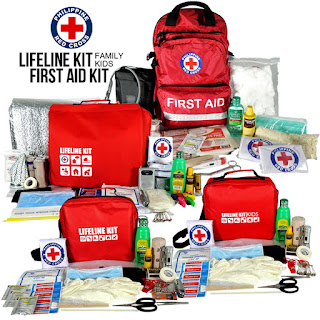The 72 Hours Formula for Typhoon Preparedness
Each of us must have a lifeline kit in a small lightweight bag to tide us over for three days. That kit should contain the necessary items needed to survive for the first seventy-two hours, especially if we are trapped in our homes or if we decide to evacuate. If there's a need to evacuate your home, the kit should be easily carried at moment's notice. The kit is exclusively for immediate survival and not for long-period survival. It is different from a fixed-site disaster kit.
When the need arises, the items inside the kit must always be usable. The contents should be checked every six months to see whether the consumable items inside will be expiring, especially water and food. They should be replaced to ensure that they are safe to consume.
Older children should be involved in preparing their own kit before a typhoon arrives. That activity makes disaster preparedness a part of their lives.
What are the things that should be placed inside the lifeline kit?
Water
A person can survive without eating food for 5 days, provided that water is available for drinking. That is the most important item to have. Place clean water in airtight containers. The water should be safe for drinking and can be used for washing and cooking.
How much water do we need for 72 hours?
Each person needs 1 gallon (3.78 liters) per day. One liter can be allocated for drinking and three liters for washing. We also should have water purification supplies (One purification tablet can purify a liter of water. 1 tablet per person per day for water purification.)
Food
The next important item to prepare is food. The members of the family should have enough food for three days. Stack only non-perishable food like canned goods, cereals, crackers, dried fruit, protein bars. Canned juice or hard candies should also be available in case a family member experiences hypoglycemia. Bring disposable plates and utensils too.
Since we receive news ahead of a coming typhoon, I suggest that we prepare those two consumable items to ensure that they are fresh.
Other items:
- Emergency tools & gears
- Personal effects and hygiene kit
- Important documents and money
- Special needs
- First-aid kits
You can also prepare your own lifeline kits, provided they contain the necessary items like the PRC's lifeline kit. Lastly, If you need to leave your homes you can bring small toys for children so that they can be comforted at the evacuation site.
Source: https://www.facebook.com/rcmuntinlupa/posts/philippine-red-cross-lifeline-kitthe-first-72-hours-after-a-disaster-is-critical/627915720580434/




Comments
Post a Comment